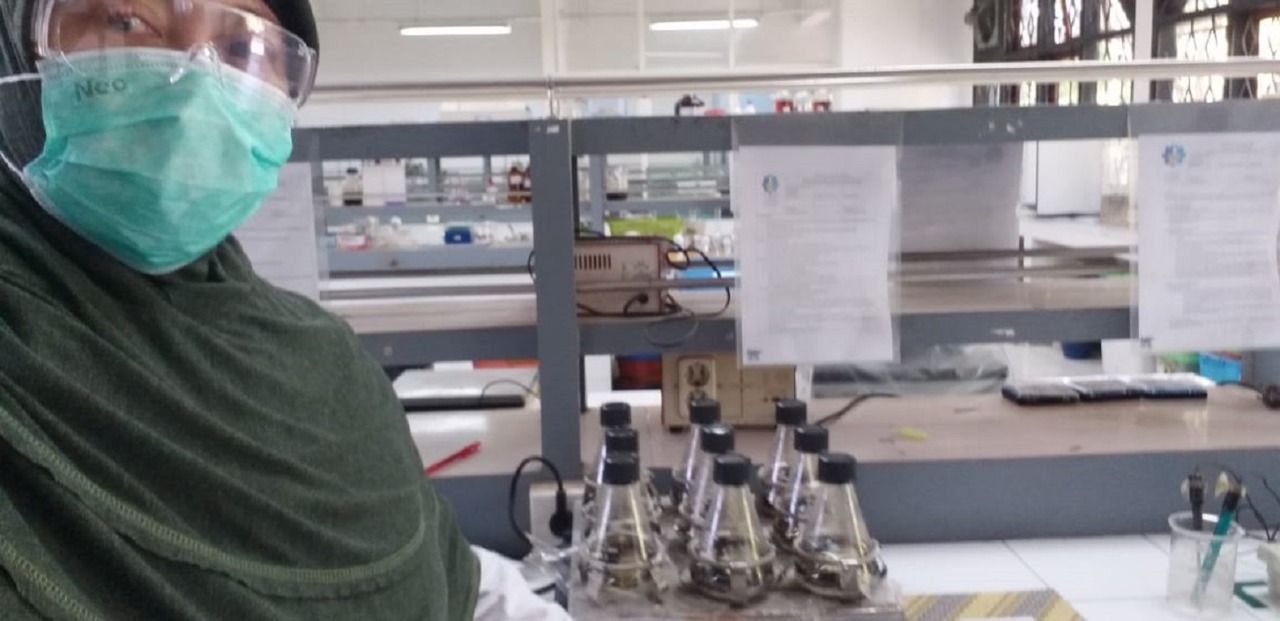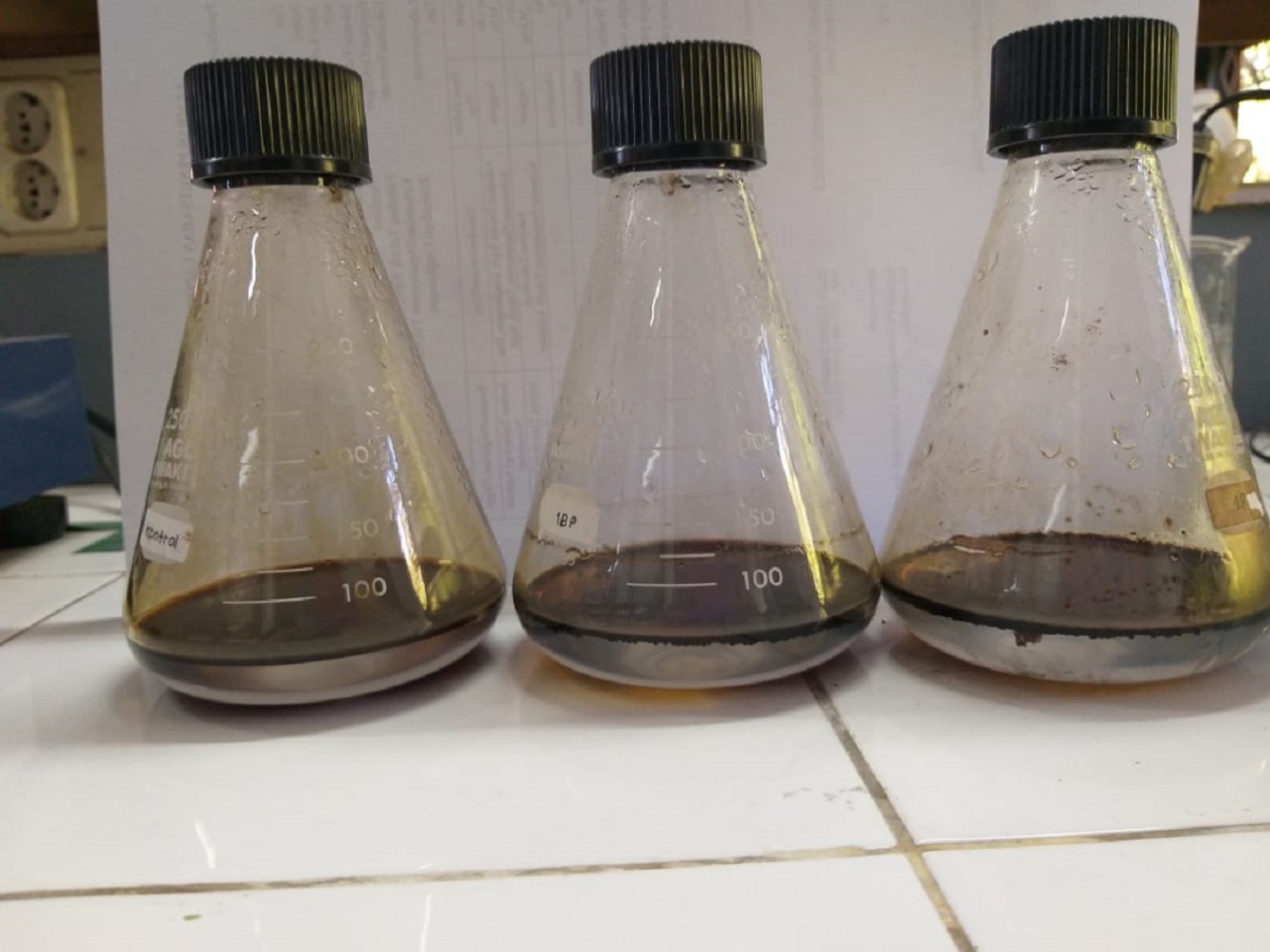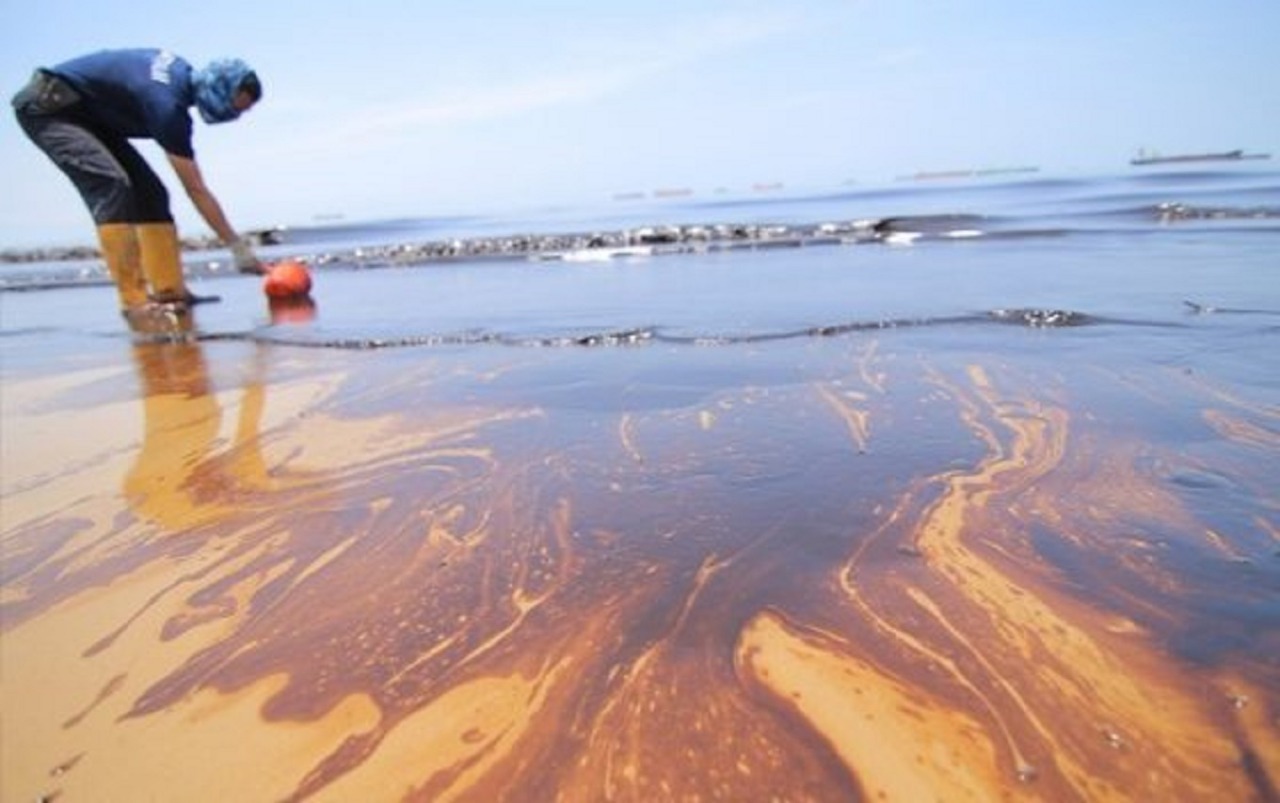Overcome Petroleum Pollution in the Sea with Bacteria

Harmin Sulistyaning Titah ST MT PhD while conducting research to decompose petroleum pollutants using microorganisms in the laboratory
ITS Campus, ITS News – One of the benefits of microorganisms is restoring the condition of the polluted ecosystem so that it returns to normal. Biodegradation is a pollution recovery method that utilizes certain microorganisms by decomposing pollutant chemical compounds. This biodegradation can also be an environmentally friendly solution in a polluted environment.
Institut Teknologi Sepuluh Nopember (ITS) academic community conducted this research. The team consists of Harmin Sulistyaning Titah ST MT Ph.D. (03Department of Environmental Engineering), Herman Pratikno ST MT Ph.D. (Lecturer of the Department of Marine Engineering), Ipung Fitri Purwanti ST MT Ph.D. (Lecturer of the Department of Marine Engineering). Environmental Engineering), and Widhowati Kesoema Wardhani ST (PMDSU Department of Environmental Engineering).
In this study, the research team used biodegradation to solve the problem of petroleum pollution that occurs in the sea. Petroleum pollution can be caused by leaks during oil drilling activities and spills when shipping.

Pollutant samples in the laboratory to be decomposed by microorganisms
Harmin said that the value of Total Petroleum Hydrocarbon (TPH) determines the level of contamination. In polluted seawater samples taken from Madura waters, the TPH value was 2,600-3,000 mg/L. In comparison, the TPH value for a suitable environment was 1,000 mg/L or below 1 percent. “This means that the seawater in the area is very polluted,” she said.
Biodegradation in this study utilizes the bacteria Bacillus subtilis and Pseudomonas putida. Harmin explained that his research used a stepwise method, where this method is a combination method of adding two bacteria. For example, the combination uses Pseudomonas putida bacteria to decompose the sample first, then added Bacillus subtilis bacteria.
The purpose of using this method is to determine the effectiveness of bacteria in decomposing chemical compounds with high levels of pollutants. Pollutant samples have decomposed as much as 66 percent in 35 days of laboratory testing. “This combination has a higher effectiveness in breaking down bacteria,” Harmin said.
In addition, Harmin also said that in addition to the type of bacteria that is effectively used to decompose pollutants, there are additional nutrients as other food for bacteria. These nutrients are obtained from fertilizers that contain the chemical elements nitrogen, phosphorus, and potassium. The function of these nutrients is to accelerate the decomposition process of pollutants in the sample.

Illustration of petroleum pollutant pollution in the sea (source from Jawapos.com)
The researcher also stated that the advantages of this biodegradation are the bacteria Bacillus subtilis and Pseudomonas putida, each of which can decompose pollutants very well, combined into one in this study. However, the drawback of this study is the very long duration of biodegradation. “If you want to be completely pollutant-free, it will take three months,” she added.
She hopes that soon, anyone can apply this research on an absolute scale, not only on a laboratory scale. It is still necessary to pay attention to many factors such as the size of the polluted area, sea waves, climate, and the number of bacteria that the researchers must prepare. (NA / ITS PR)
Reporter: Regy Zaid Zakaria
Related News
-
ITS Supports Academic Infrastructure: New Medical Faculty Building
ITS Campus, ITS News — Entering the second year of accepting new students from the Faculty of Medicine and
March 01, 2022 19:03 -
ITS Welcomes 163 New Engineers to Empower Indonesia’s Growth
ITS Campus, ITS News – Institut Teknologi Sepuluh Nopember (ITS) continues its commitment to meeting the needs of engineers in
March 01, 2022 19:03 -
ITS Sends Off 12 Free Mudik Vehicles Ahead of Eid Al-Fitr
The dispatch of 11 bus fleets carrying ITS students for the Free Mudik ITS 2024 ITS Campus, ITS News
March 01, 2022 19:03 -
ITS Lecturer Wins 2024 Female Science Talents Intensive Tracks from Germany
Sri Fatmawati SSi MSc PhD, a lecturer at the Department of Chemistry, ITS, has emerged as the winner of
March 01, 2022 19:03
